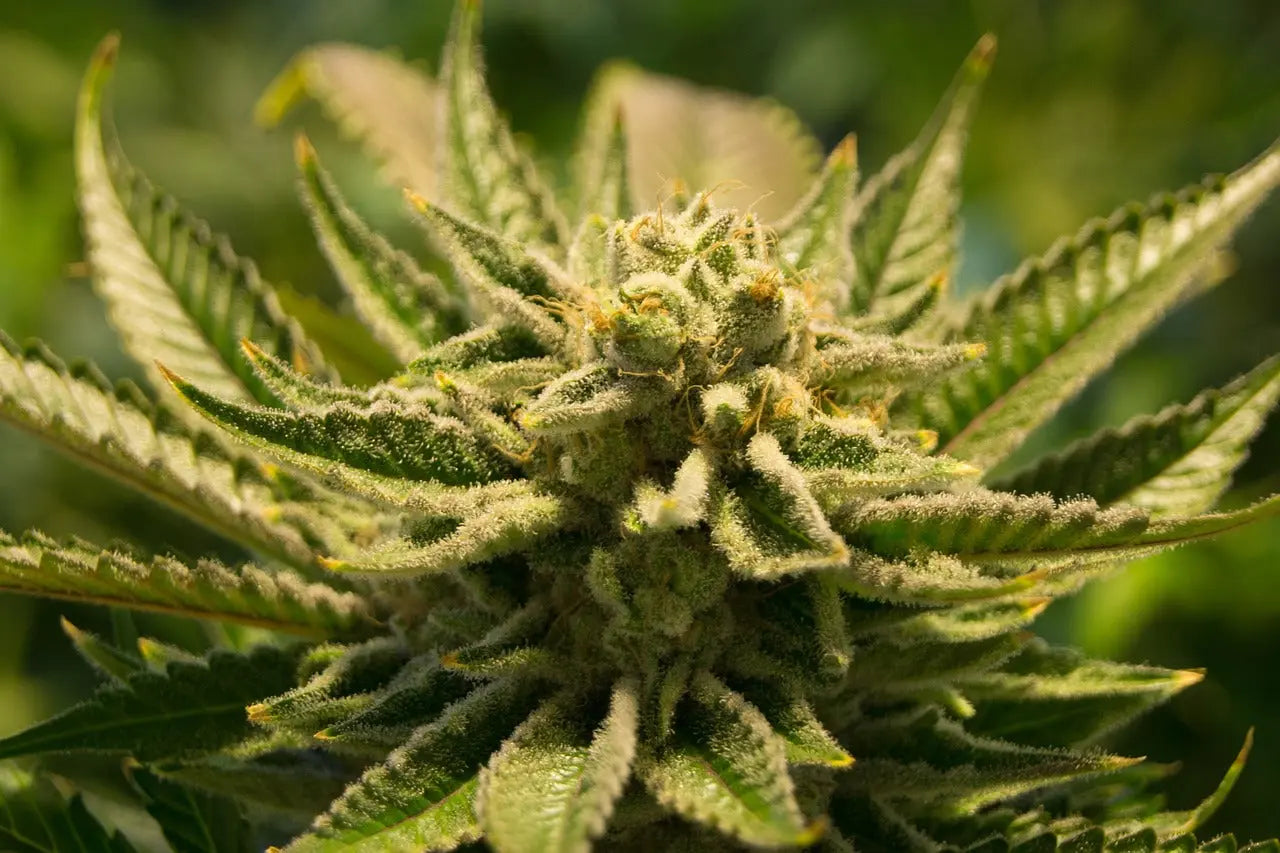The “entourage effect” is a concept that states that a mixture of plant substances has increased biological activity and offers optimal synergistic effects. This increase in effect can be positively influenced in particular by terpenes.
Although the natural medicinal plant hemp is becoming increasingly popular due to its versatile and positive uses, many people still do not know what makes this plant so unique and which other groups of substances are important in addition to the cannabinoids (such as CBD, etc.). This is where special organic compounds come into play. Terpenes! These components of the plant, predominantly “non-cannabinoids,” modify CBD in a positive way. They are mainly found in the essential oils of the hemp plant and are largely responsible for the smell and taste.
The hemp plant and its ingredients
When you think of the hemp plant, you quickly associate CBD (cannabidiol) and THC (tetrahydrocannabinol). CBD is certainly an important player without psychoactive effects and is gaining more and more interest from the public, research and complementary medicine. But there is so much more to the plant. Other components should also be examined more closely, as their interaction should not be underestimated.
Over 600 components of the cannabis plant are known, including over 200 terpenes, over 100 cannabinoids, 50 hydrocarbons and more than 200 other biochemical compounds such as flavonoids. In addition to the cannabinoids, the terpenes are particularly noteworthy [1]. So there are certainly over 500 ingredients in hemp, mostly non-cannabinoids. At first, terpenes were not the focus of the investigations, but they are becoming increasingly important and are becoming a separate research area.
Ingredients of the hemp plant
In this magazine article we will therefore take a closer look at the most important and common terpenes, identify their characteristics and finally address the interactions between the terpenes and CBD - the so-called terpene entourage effect.
Definition of terpenes
Terpenes are very common organic compounds that are produced by many plants and animals and function as biosynthetic cell messengers. Did you know? Many hormones such as estrogens are also terpenes and have the same basic organic chemical structure.
Terpenes are often referred to as terpenoids. The term terpenoids includes all substances that contain terpenes as building blocks. This includes numerous secondary plant substances such as bitter substances, carotenoids, saponins, steroids, etc. Cannabinoids also have terpenoid character.
Terpenes, with around 15,000 compounds, form the largest group of chemical substances in the plant world [4].
Depending on the number of carbon atoms, the following terpene compounds are distinguished:
Terpenes fulfill a variety of tasks in plants: For example, they attract insects for pollination, but also warn and repel potential pests such as insects, bacteria and fungi. They primarily serve for communication - and we can also perceive them with our nose. The monoterpene menthol, for example, is characteristic of the scent of peppermint.
Cannabinoids and terpenes in interaction
In the past, it was mainly assumed that terpenes served primarily as fragrances and flavorings in the hemp plant, but today this is viewed in a more differentiated way.
In a study (1964), Israeli researcher Raphael Mechoulam identified CBD and THC as the two main active ingredients in cannabis. However, he and other researchers later found that the two cannabinoids only accounted for part of the effect: other cannabinoids and especially terpenes also influence the effect. This has been called the entourage effect.
The term "entourage" comes from French and means "following" or "environment". In the context of cannabis research, the "entourage effect" means that a mixture of plant substances has a higher biological activity than the isolated pure substance itself. The hemp plant contains a variety of phytocannabinoids and terpenes, which plays a crucial role in the entourage or synergy effect . By combining various cannabinoids with terpenes, an optimized effect is achieved, meaning that even moderate doses of cannabidiol can achieve outstanding health results. This enhanced effect can be achieved by preserving certain plant substances, especially terpenes and other phytocannabinoids.
- Terpenes modify the effects of cannabinoids by
- Improve the absorption of CBD (and THC)
- mitigate possible side effects
- Regulate availability in the body
- Increase effects and overcome bacterial protective mechanisms
Terpenes in the hemp plant
Over 200 terpenes have already been detected in the hemp plant. Each individual plant contains specific terpene combinations that are similar in the same strain of cannabis. These terpenes are oils that are secreted by the glandular hairs of the hemp plant and are largely responsible for the smell and taste. The typical “hemp smell” does not come from CBD or THC, but from the monoterpenes and sesquiterpenes that are found in the essential oils of cannabis and make up the special scent. So when we perceive the characteristic scent of cannabis, it is due to the terpenes that we can smell.
There are over 200 terpenes present in the cannabis plant
The following cannabis terpenes are said to have additive, synergistic or antagonistic effects:
By far the most common terpene in the hemp plant is mycrene. It is present in essential oils up to 60% and is characterized by its earthy and herbal aroma, similar to that of cloves. Mycrene is also found in many other plants, such as hops, lemongrass, bay leaves, verbena, eucalyptus, wild thyme, ginger, frankincense or lemongrass.
Research in this area indicates that mycrene has properties such as sleep-inducing, pain-relieving, anti-inflammatory and sedative effects and is therefore involved in the entourage effect. It is mainly a natural insecticide used by plants for defense.
Limonene
The monoterpene limonene has a strong citrus-like aroma, as found in oranges, limes and lemons. Orange essential oil consists of 90% limonene, in comparison, lemon essential oil consists of 65% limonene. Limonene is also found in caraway, dill, coriander and juniper. It is mainly used in food and perfumes and also develops its power in conventional citrus cleaners.
When paired with CBD, limonene can lead to a range of entourage effects, particularly promoting balance and enhancing mood.
Βeta-caryophyllene
This terpene has a pungent and peppery smell and a spicy, woody aroma. It is also found in black pepper, cloves, cinnamon, caraway and basil.
Due to its strong interaction with CB2 receptors, it is even considered a cannabinoid with great therapeutic potential and can be helpful for stomach problems as well as inflammatory diseases of the skin and musculoskeletal system.
Pinene
Pinene is a widespread terpene in the plant world. It is found in softwoods (spruce, fir, etc.) and many other plants and is reminiscent of the scent of conifers. The terpene is associated with anti-inflammatory and bronchodilator effects and can increase memory performance.
Linalool
The prominent essential oil, which is also found in lavender, has floral and lavender undertones and smells sweet and floral. Linalool is also found in coriander, hops, nutmeg, ginger, cinnamon, marjoram, thyme, basil and lavender, among others. Mosquitoes and moths don't like the scent at all - it's a natural ingredient in mosquito repellents and mothballs. Research has shown that linalool can have anti-anxiety and relaxing effects.


Share:
Shop CBD Buds with us - at unbeatable prices
Could THC soon be legal in Germany?